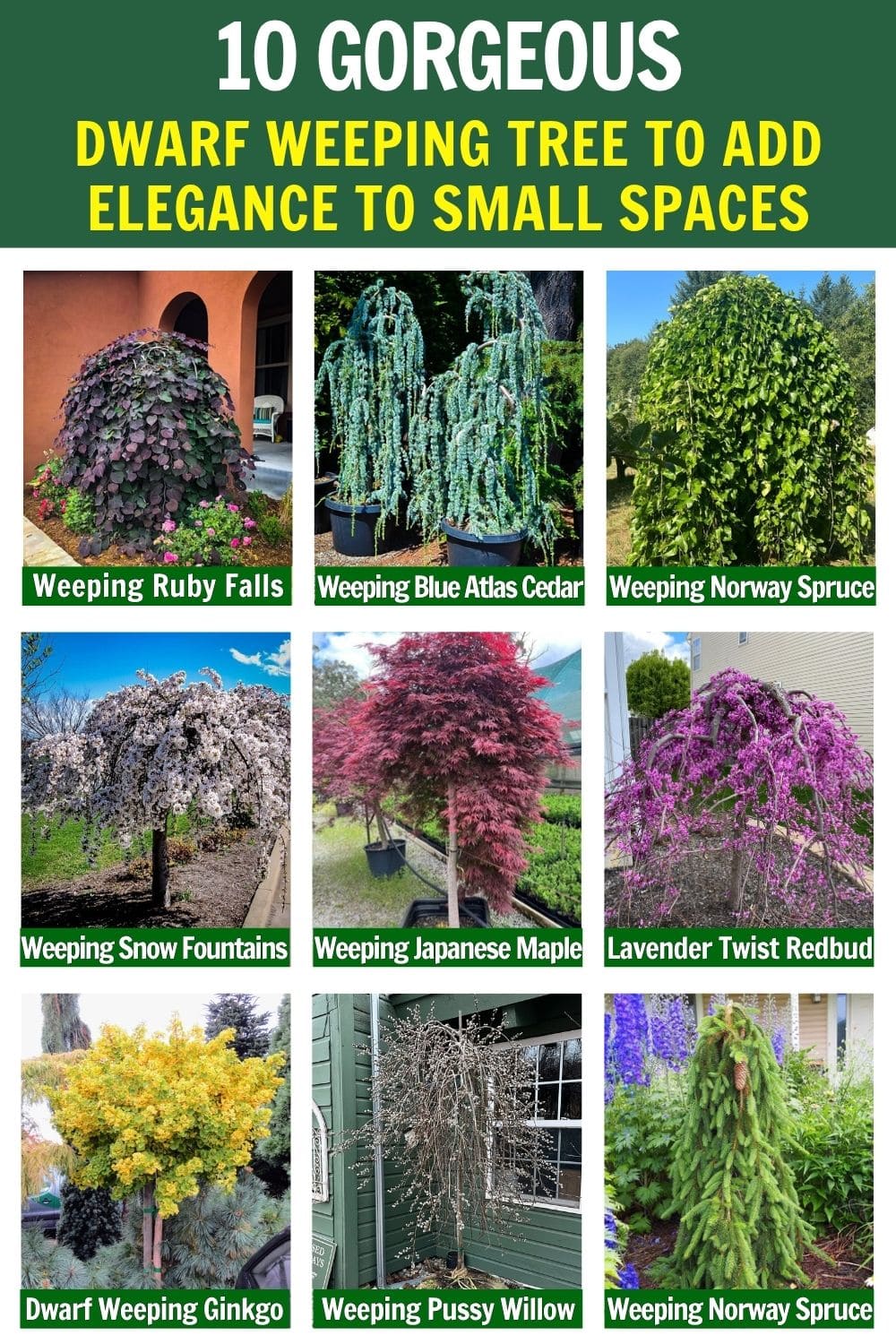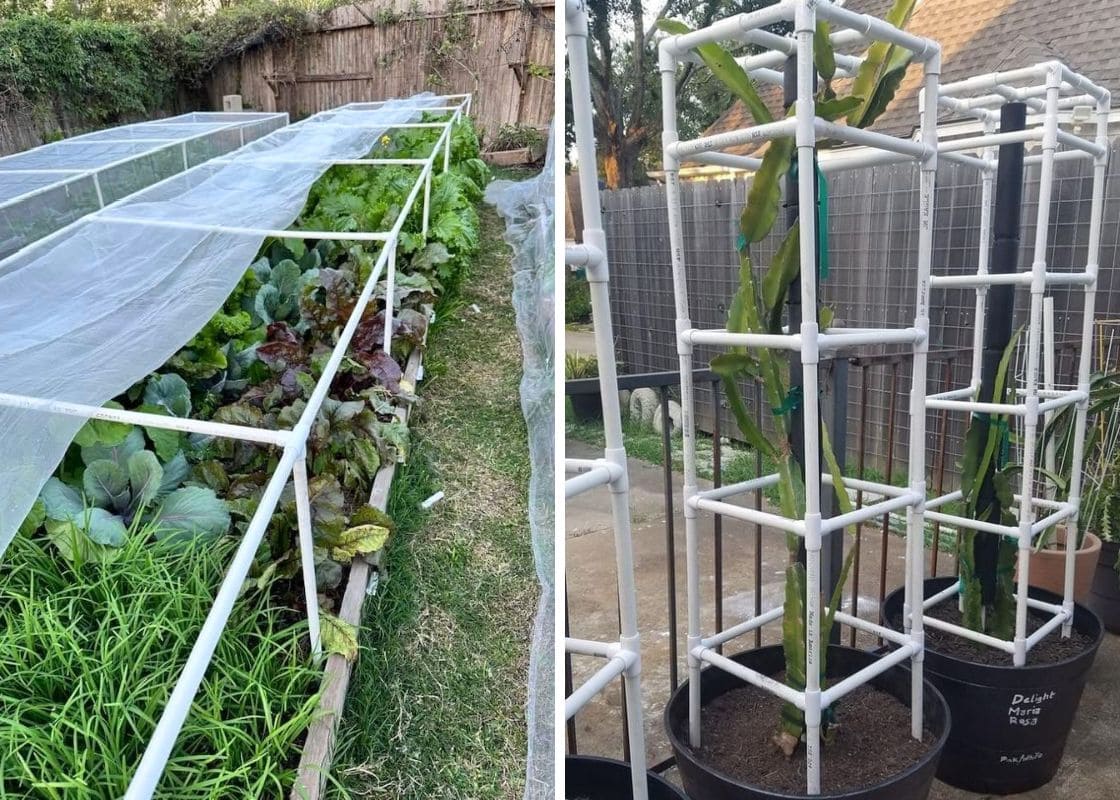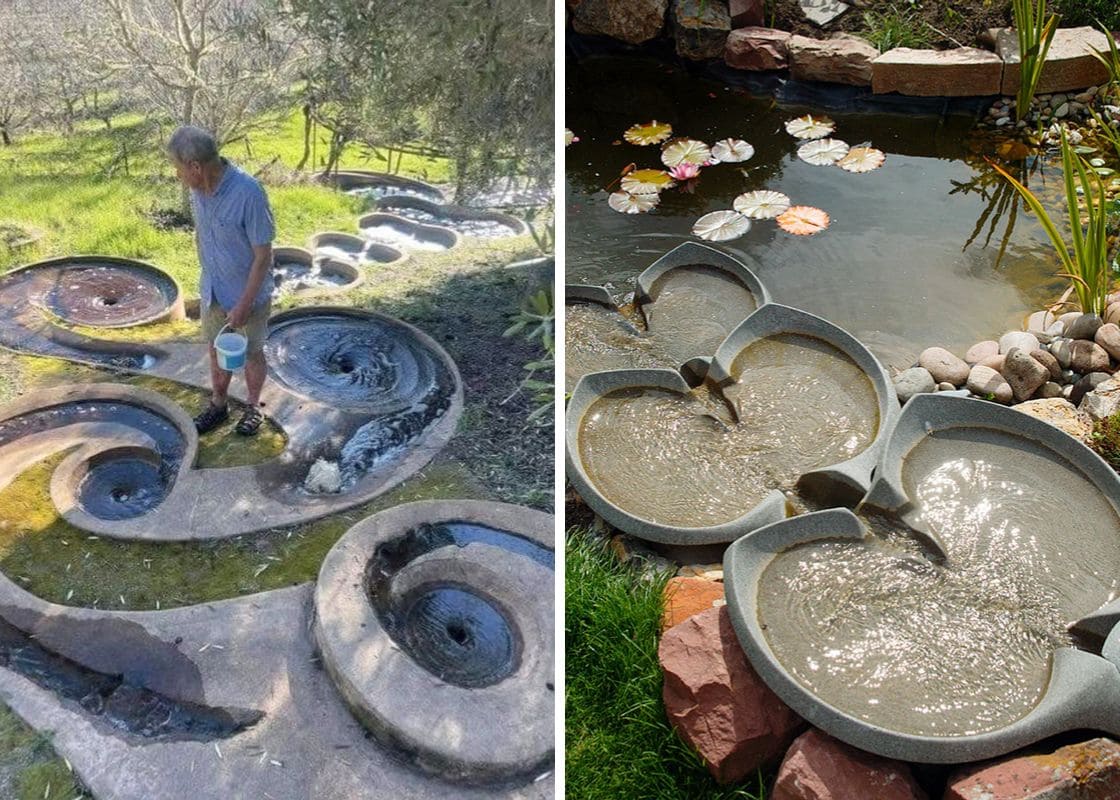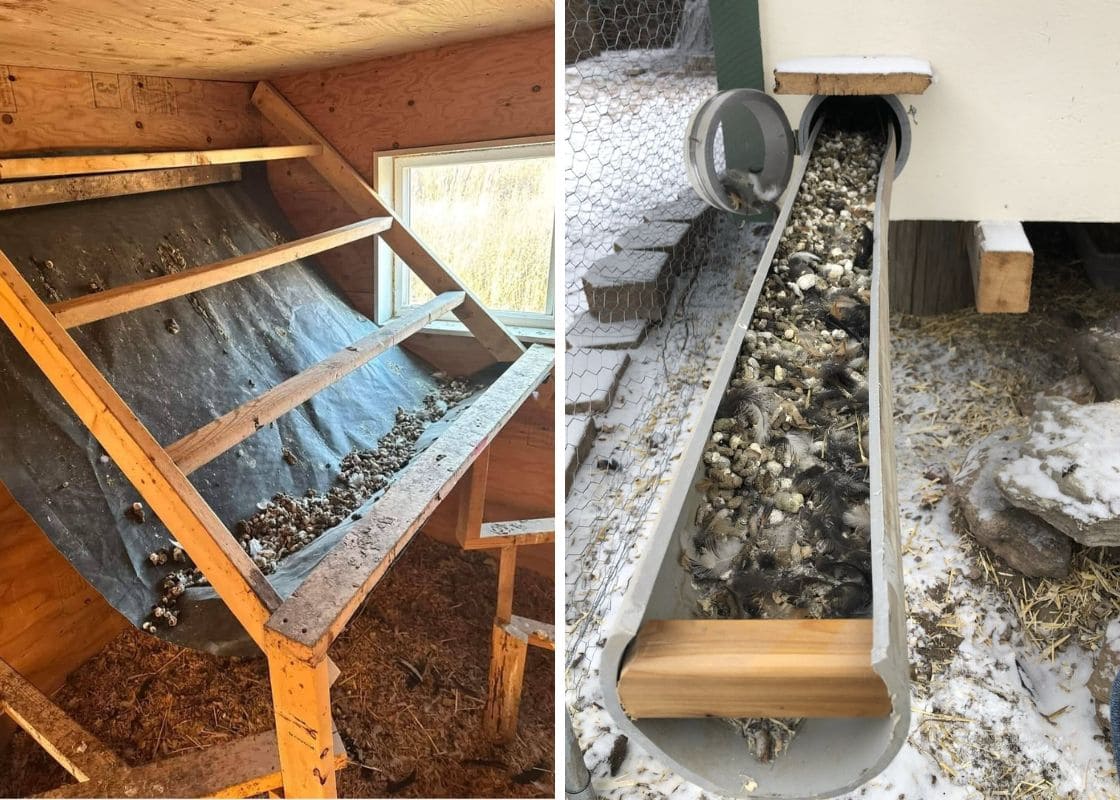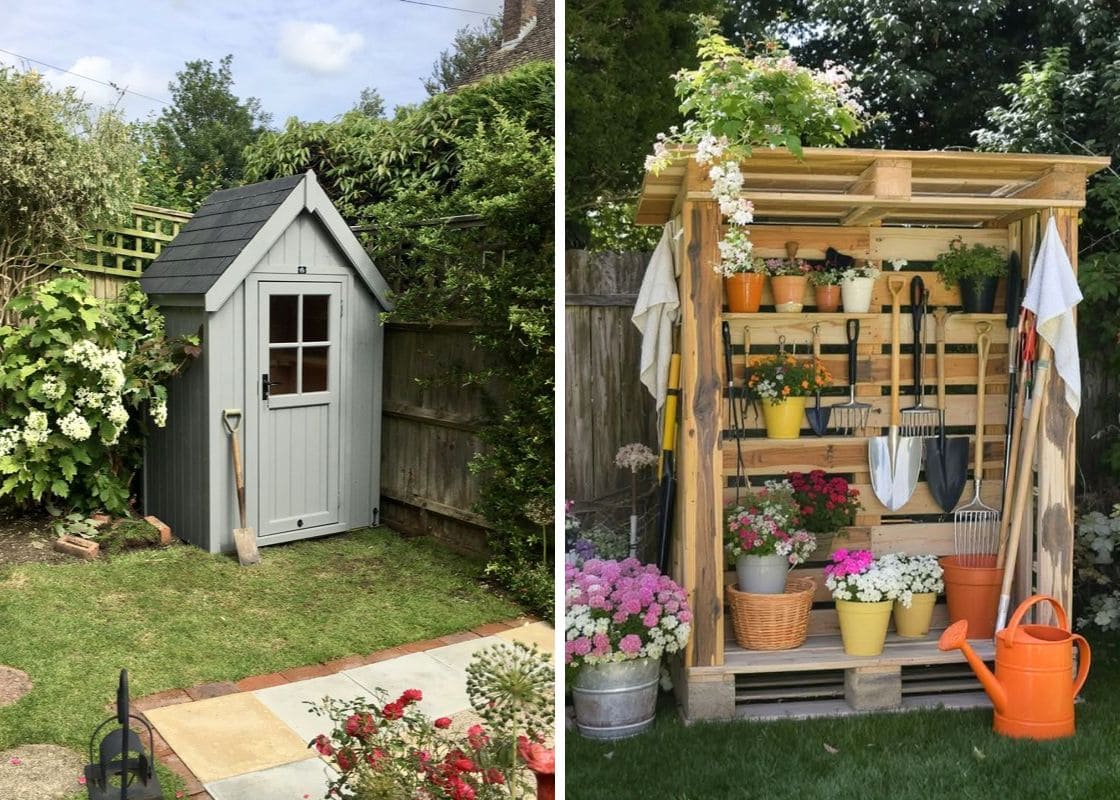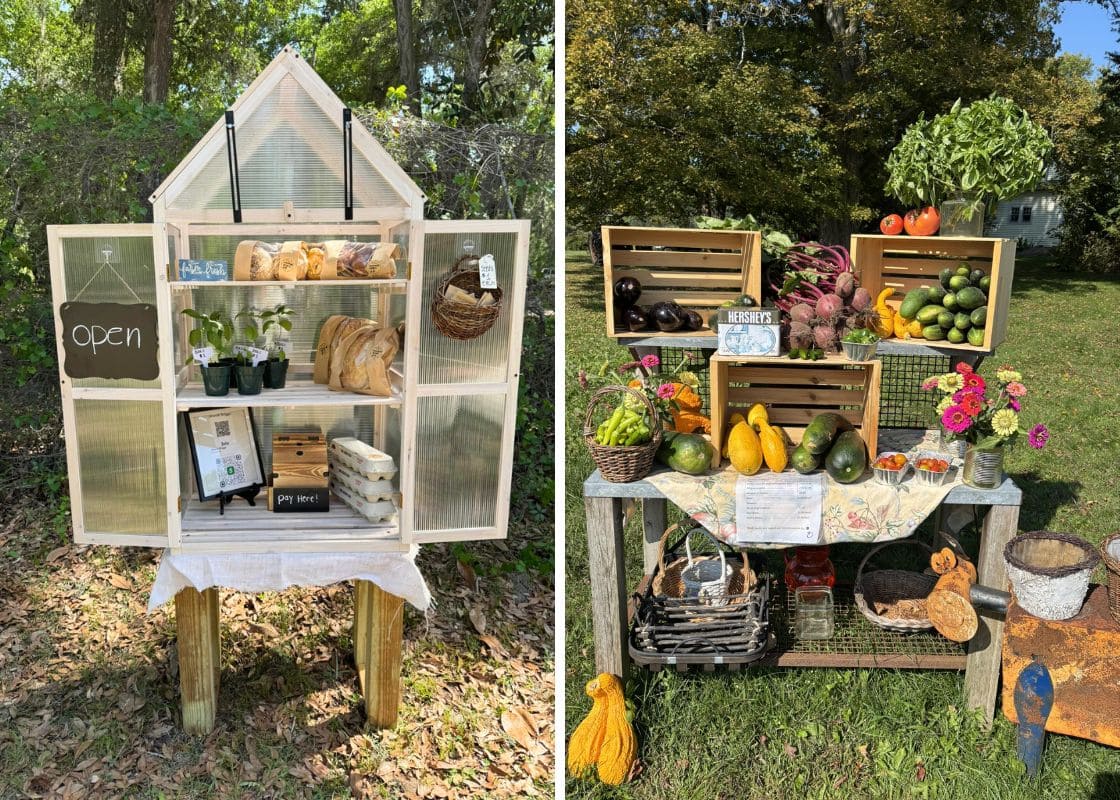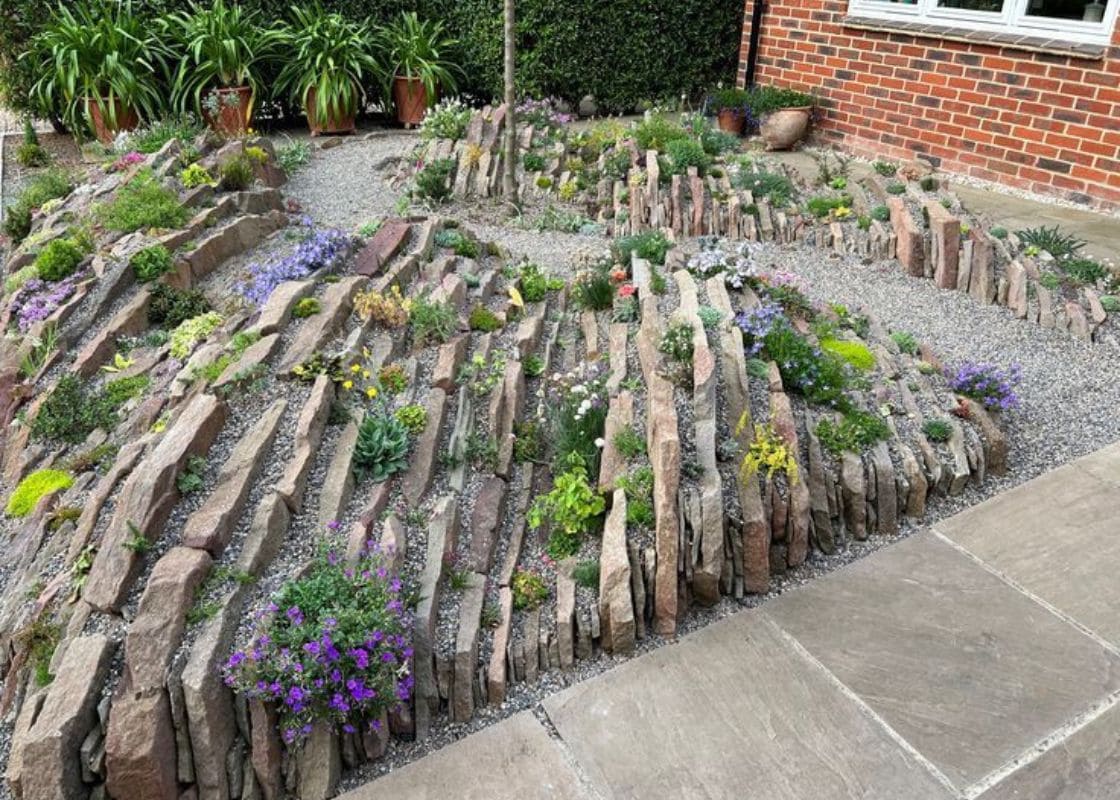As you know, a tree that drapes and spills like a living waterfall instantly brings softness and movement to the garden.
Dwarf weeping trees carry this graceful presence without overwhelming a small space.
Their gentle arches, flowing branches, and sculptural forms add elegance and intrigue, drawing the eye in every season.
These compact beauties work beautifully as standalone showpieces, quiet accents along walkways, or even in containers on patios. Unlike their full-sized relatives, they offer all the visual drama with far less space and upkeep.
In this guide, you’ll explore ten of the most stunning varieties, each chosen for its unique character, size, and garden appeal.
1. Weeping Japanese Maple
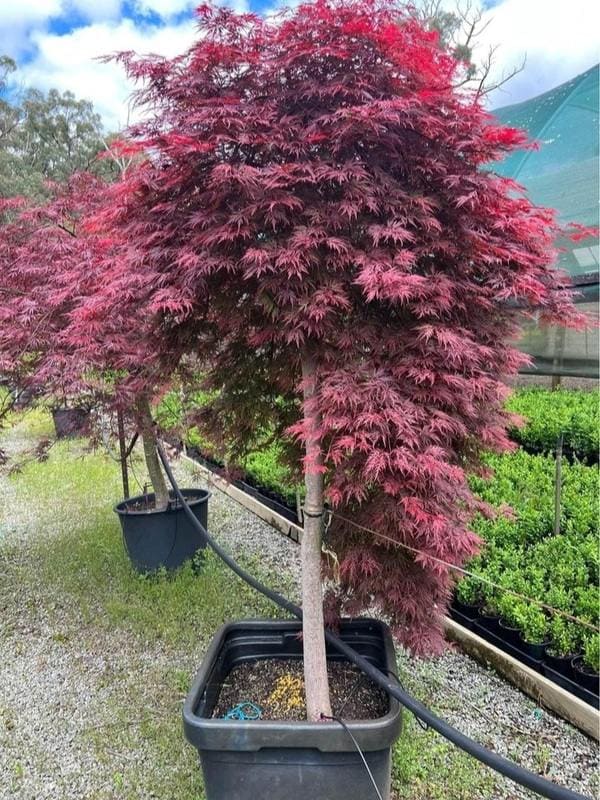
- Botanical name: Acer palmatum ‘Crimson Queen’
- Mature size: 6-8 feet tall and wide
- Growth habit: Low, cascading branches with dome shape
- USDA zones: 5-8
This Japanese maple is pure elegance in compact form. With finely cut lace-like leaves that shift from deep burgundy in spring to fiery crimson in fall, the weeping Japanese maple adds year-round interest.
It thrives best in filtered sun or dappled shade, especially in warmer climates. Soil should be rich, moist, and well-draining so you need to avoid heavy clay.
Gardeners love it as a graceful focal point in rock gardens or near entryways where its silhouette can shine. It’s low-maintenance once established, needing only light pruning to shape.
Moreover, the leaves are delicate, but the tree itself is surprisingly hardy. It’s a small masterpiece that quietly commands attention without ever trying too hard.
2. Weeping Redbud ‘Ruby Falls’
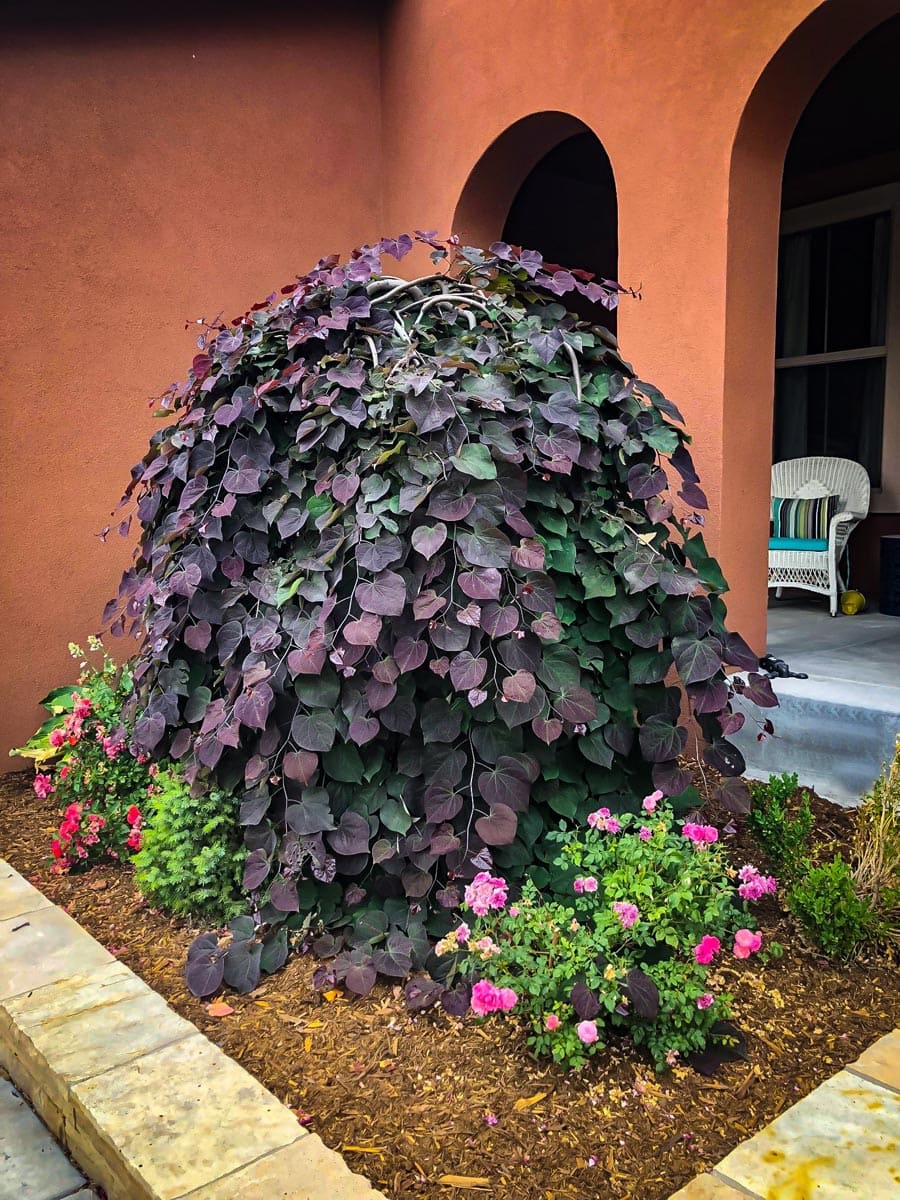
- Botanical name: Cercis canadensis ‘Ruby Falls’
- Mature size: 6-8 feet tall, 4-6 feet wide
- Growth habit: Upright center with pendulous branches
- USDA zones: 5-9
This tree is a living work of art from early spring to fall. ‘Ruby Falls’ produces vivid magenta blossoms that cling directly to its weeping limbs before the heart-shaped leaves even appear.
Those leaves emerge with deep burgundy color and mature into rich green as the season goes on. It craves full sun for the best foliage color and flowers, though partial shade works in hot southern zones.
This redbud handles most soils as long as it drains well. It’s ideal in narrow spaces, patio beds, or cottage gardens. Bonus, pollinators can’t resist its early spring show.
3. Weeping Cherry ‘Snow Fountains’
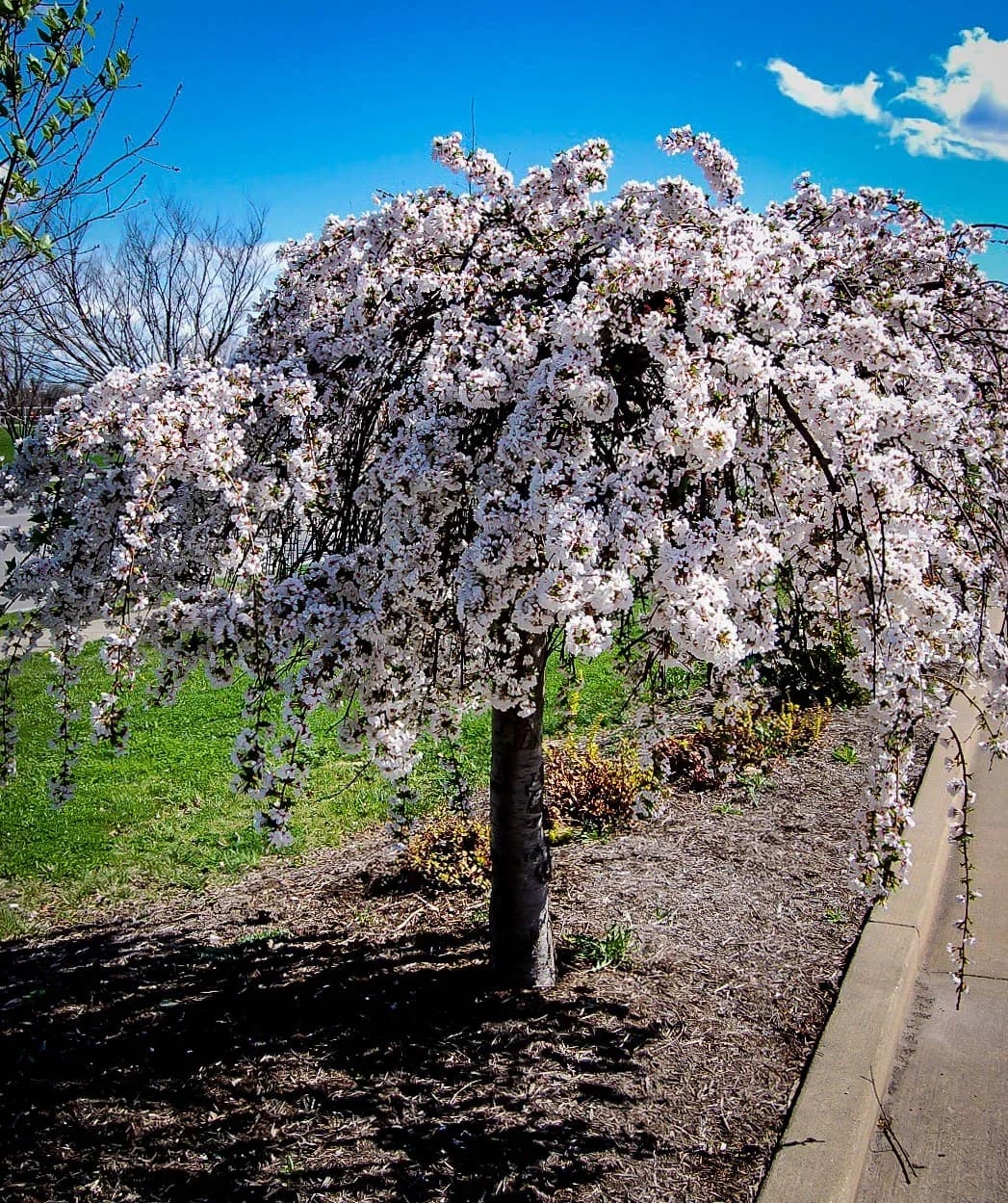
- Botanical name: Prunus x ‘Snofozam’
- Mature size: 6-8 feet tall, 5-7 feet wide
- Growth habit: Graceful, arching waterfall form
- USDA zones: 5-8
Few trees announce spring as joyfully as the ‘Snow Fountains’ weeping cherry. In early spring, its branches become a cascade of pure white blossoms, followed by glossy green leaves and golden fall color.
It needs full sun for the strongest bloom display and good air circulation. Plant in slightly acidic, well-draining soil and mulch around the base to keep roots cool. It works well in formal beds, Japanese gardens, or even large pots.
Once established, it’s drought tolerant and needs little pruning, just remove dead or awkward limbs after flowering.
It attracts pollinators and photographers alike, standing out as a sculptural gem even in winter.
4. Weeping Blue Atlas Cedar
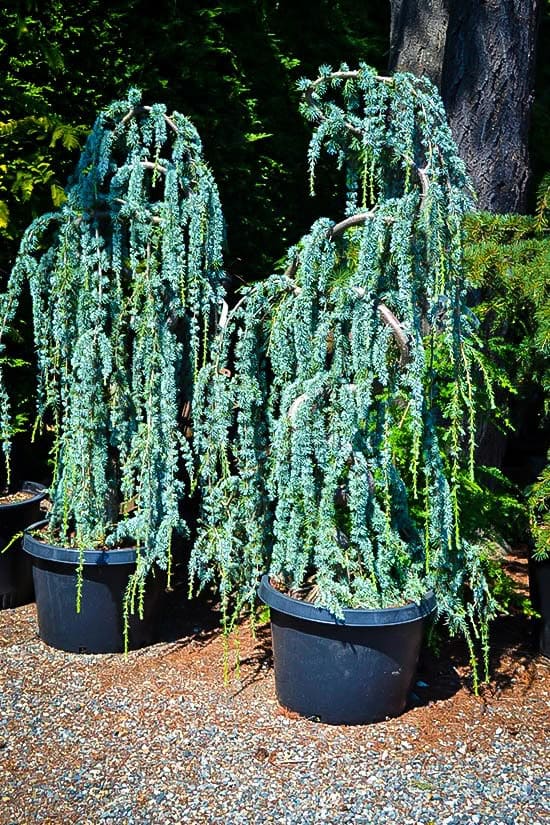
- Botanical name: Cedrus atlantica ‘Glauca Pendula’
- Mature size: 8-10 feet tall, variable width
- Growth habit: Trailing, sculptural branches (trained form)
- USDA zones: 6-9
This evergreen is more than a tree, it’s a living sculpture. With icy blue needles and a trained weeping form, it spills and twists in whatever direction you guide it.
Ideal for dry, sunny spots, the weeping blue atlas cedar prefers well-draining soil and benefits from deep watering during establishment. It’s low-maintenance and extremely drought-tolerant once rooted.
Gardeners often use it to create unique garden art or to soften hardscape corners. Plus, be patient as this cedar grows slowly, but its architectural form only improves with age.
Its bold blue color is a standout year-round, especially against green backdrops or snowy gardens in winter.
5. Weeping Pussy Willow

- Botanical name: Salix caprea ‘Pendula’
- Mature size: 6-8 feet tall, 4-6 feet wide
- Growth habit: Umbrella-like canopy with soft draping branches
- USDA zones: 4-8
This charming willow earns its reputation every spring with fuzzy catkins that burst along its cascading stems, often the first sign that winter is finally over.
‘Pendula’ thrives in full sun but tolerates light shade and loves consistently moist soil. It works best near ponds or in rain gardens where its roots stay cool and damp.
The weeping pussy willow brings movement and softness to formal gardens or cottage landscapes, and it’s easy to prune for size and shape after flowering.
It’s also a favorite for early-season pollinators. Just be mindful of drainage as poorly draining soil can cause root rot over time.
6. Weeping Mulberry
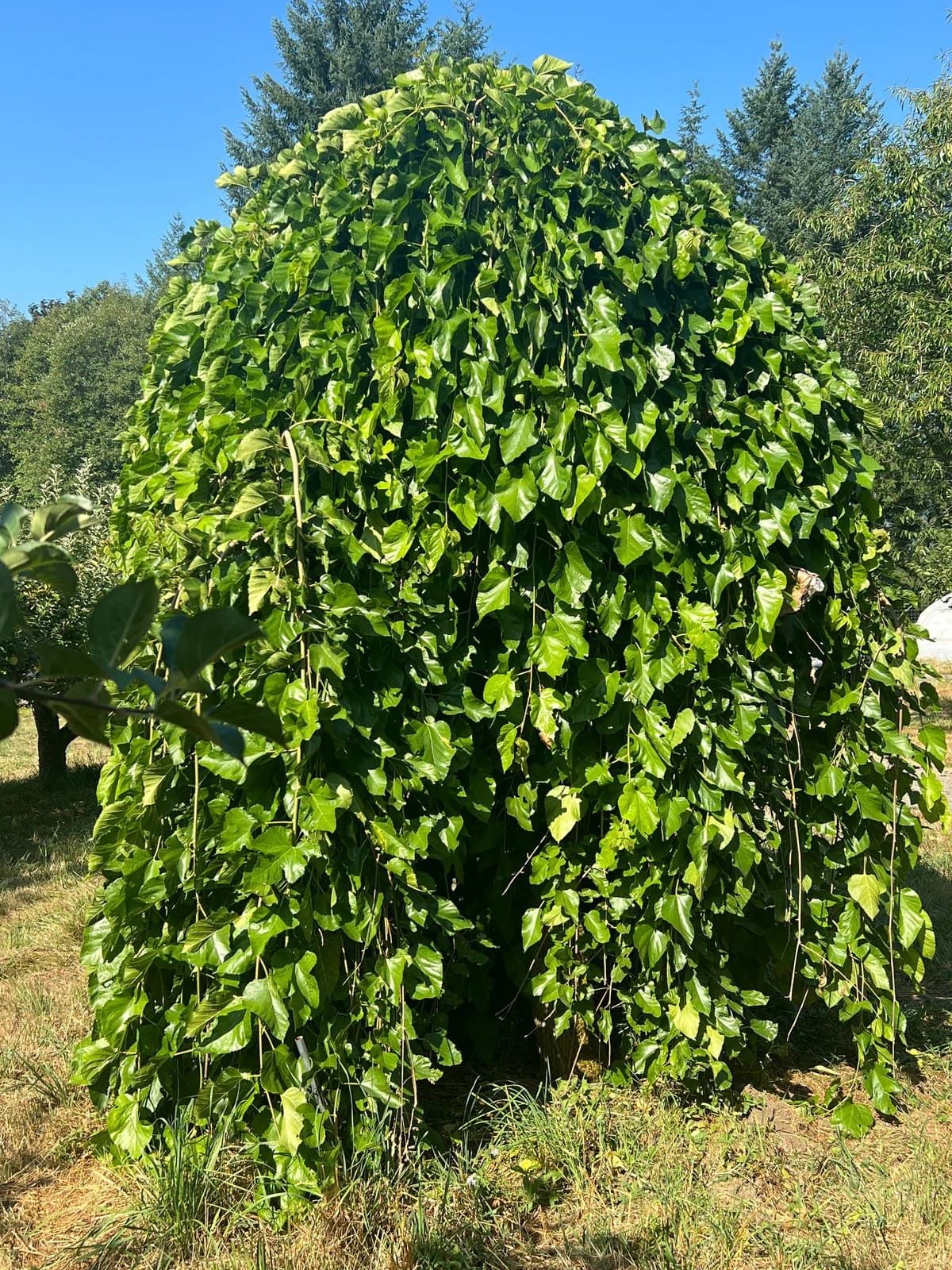
- Botanical name: Morus alba ‘Chaparral’
- Mature size: 6-8 feet tall, 8-10 feet wide
- Growth habit: Wide-spreading and umbrella-like
- USDA zones: 4-9
Weeping mulberry offers a dramatic silhouette with its long, draping branches and broad canopy. This variety is sterile, so you won’t be dealing with messy fruit, which makes it a perfect low-maintenance ornamental.
It performs best in full sun with well-drained soil and moderate watering. Its coarse, glossy green leaves create a dense curtain in summer, providing a shady hideaway underneath.
Additionally, you should prune in winter to keep its dramatic shape in check. Resistant to drought and urban pollution, it’s as tough as it is graceful.
7. Walker’s Weeping Peashrub
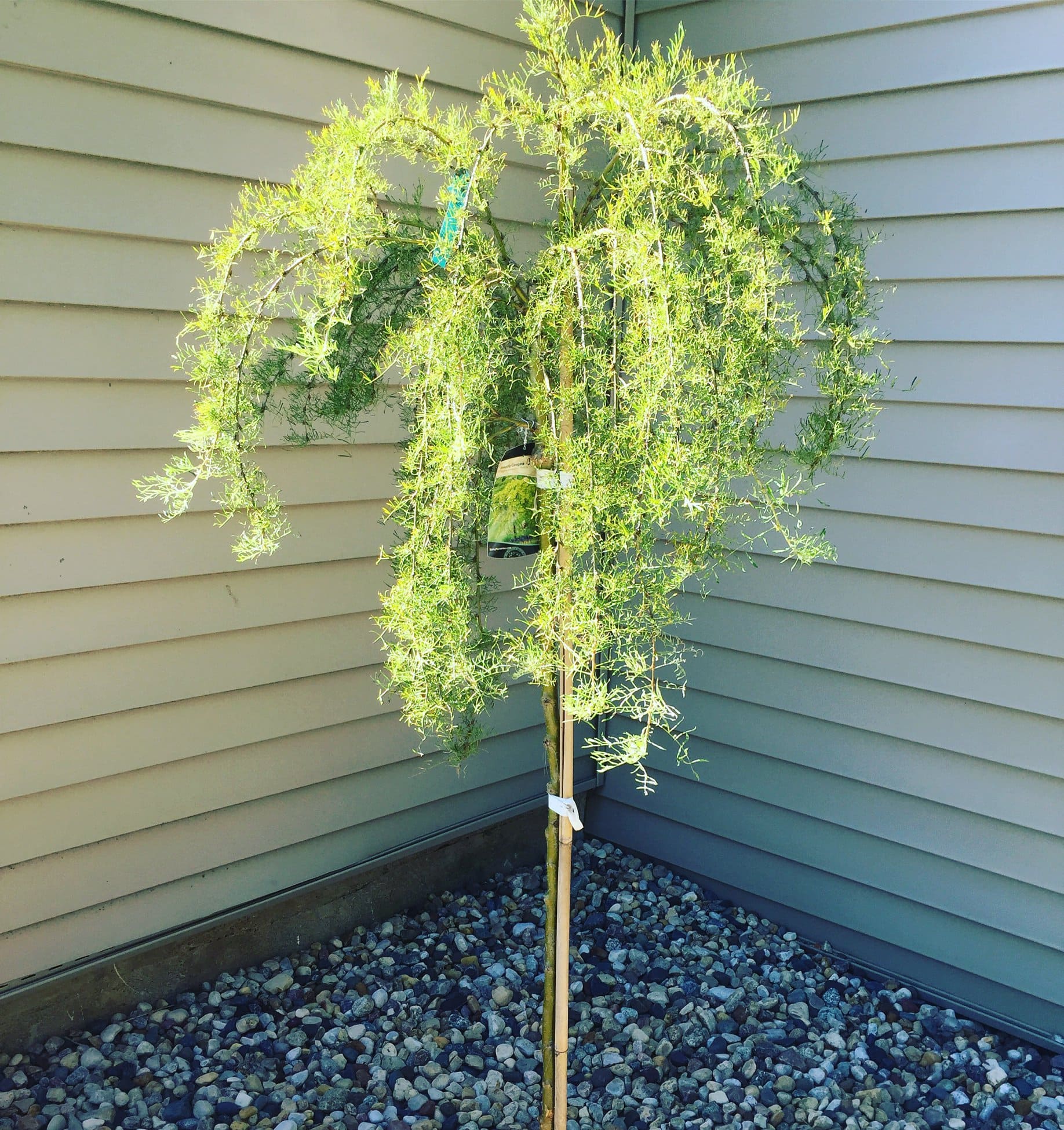
- Botanical name: Caragana arborescens ‘Walker’
- Mature size: 5-6 feet tall, 3-5 feet wide
- Growth habit: Delicate, fine-textured weeping form
- USDA zones: 2-7
This cold-hardy gem hails from the Canadian prairie and thrives where other ornamentals falter. Walker’s peashrub features finely divided, fern-like foliage and soft yellow pea-shaped flowers in late spring.
Its airy branches sway in the breeze and lend elegance to rock gardens or xeriscapes. It thrives in full sun and poor, dry soils, even tolerating alkaline conditions.
Minimal care is needed beyond occasional pruning for structure. It’s a smart pick for exposed spots or dry slopes, offering beauty without the need for constant babying.
This plant also attracts beneficial insects and fixes nitrogen in the soil.
8. Lavender Twist Redbud
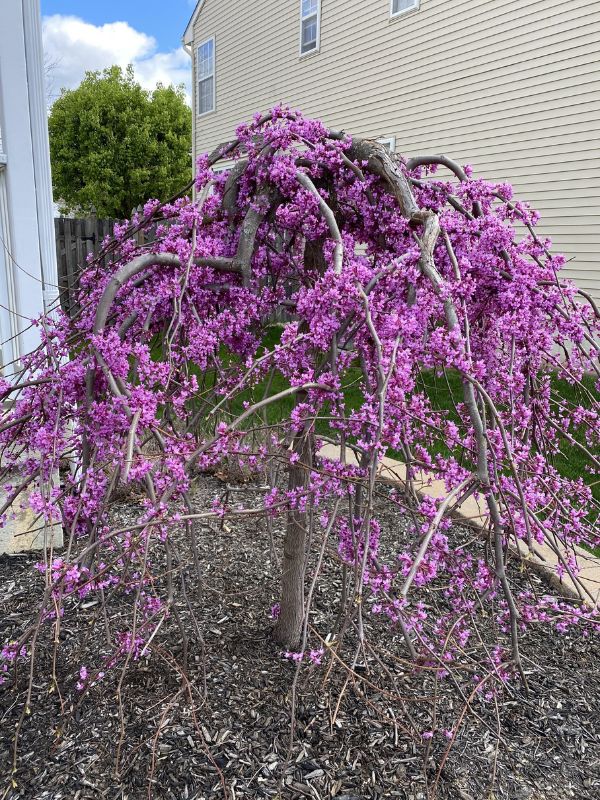
- Botanical name: Cercis canadensis ‘Covey’
- Mature size: 5-6 feet tall, 6-8 feet wide
- Growth habit: Low, wide canopy with twisting branches
- USDA zones: 5-9
This whimsical weeping tree lives up to its name with twisted branches and a low, graceful arching habit. In early spring, it erupts in rich pink blooms that cling directly to its bare stems, followed by heart-shaped leaves that turn yellow in fall.
It prefers full sun to part shade and moderately moist, well-drained soil. It’s ideal for patios, foundation plantings, or small courtyard gardens.
‘Lavender Twist’ is compact but striking, and surprisingly tolerant of urban soils and compact spaces.
Light pruning helps shape its quirky silhouette. Its playful structure makes it feel almost like a garden sculpture that blooms.
9. Weeping Norway Spruce
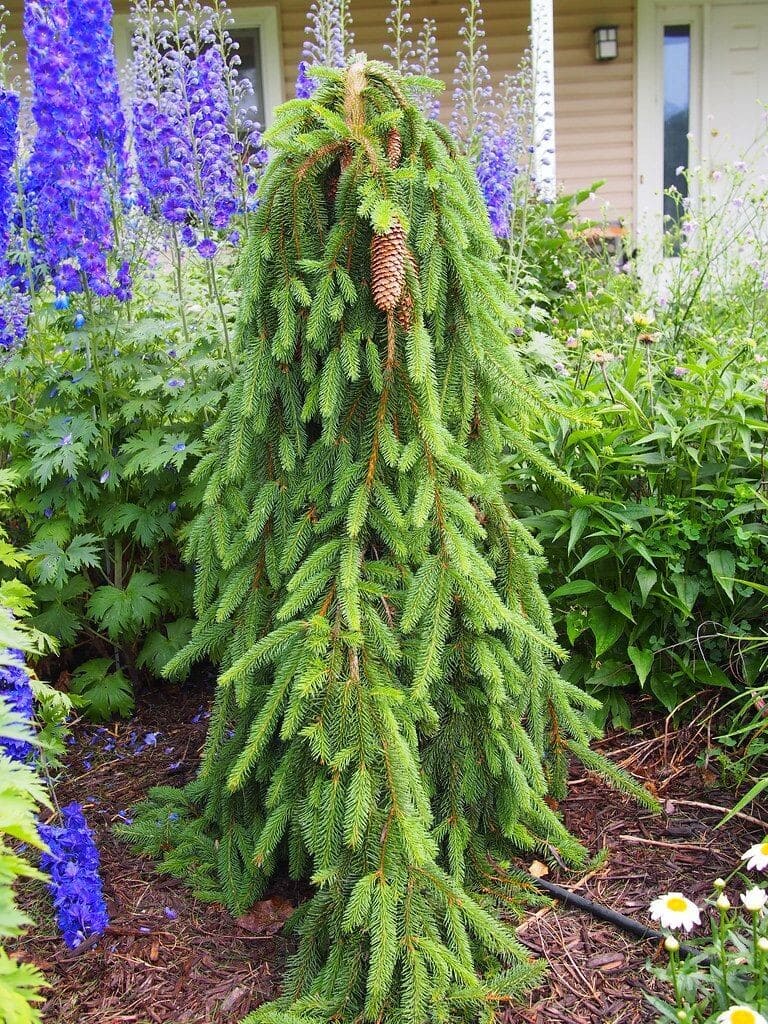
- Botanical name: Picea abies ‘Pendula’
- Mature size: 6-15 feet tall, 4-6 feet wide
- Growth habit: Trailing evergreen, sculptural with downward branches
- USDA zones: 3-7
This evergreen is the definition of drama in the garden. Its weeping form depends on how it’s staked and trained, making it a living sculpture that evolves over time.
The branches drape downward, often touching the ground in layers of rich green needles. It thrives in full sun and well-drained soil, tolerates cold and wind, and asks for very little once settled.
Gardeners love its texture in mixed borders or as a single specimen near paths or boulders.
Plus, the dense needles provide winter interest and cover for small birds. It’s a great pick for year-round structure without fuss.
10. Dwarf Weeping Ginkgo
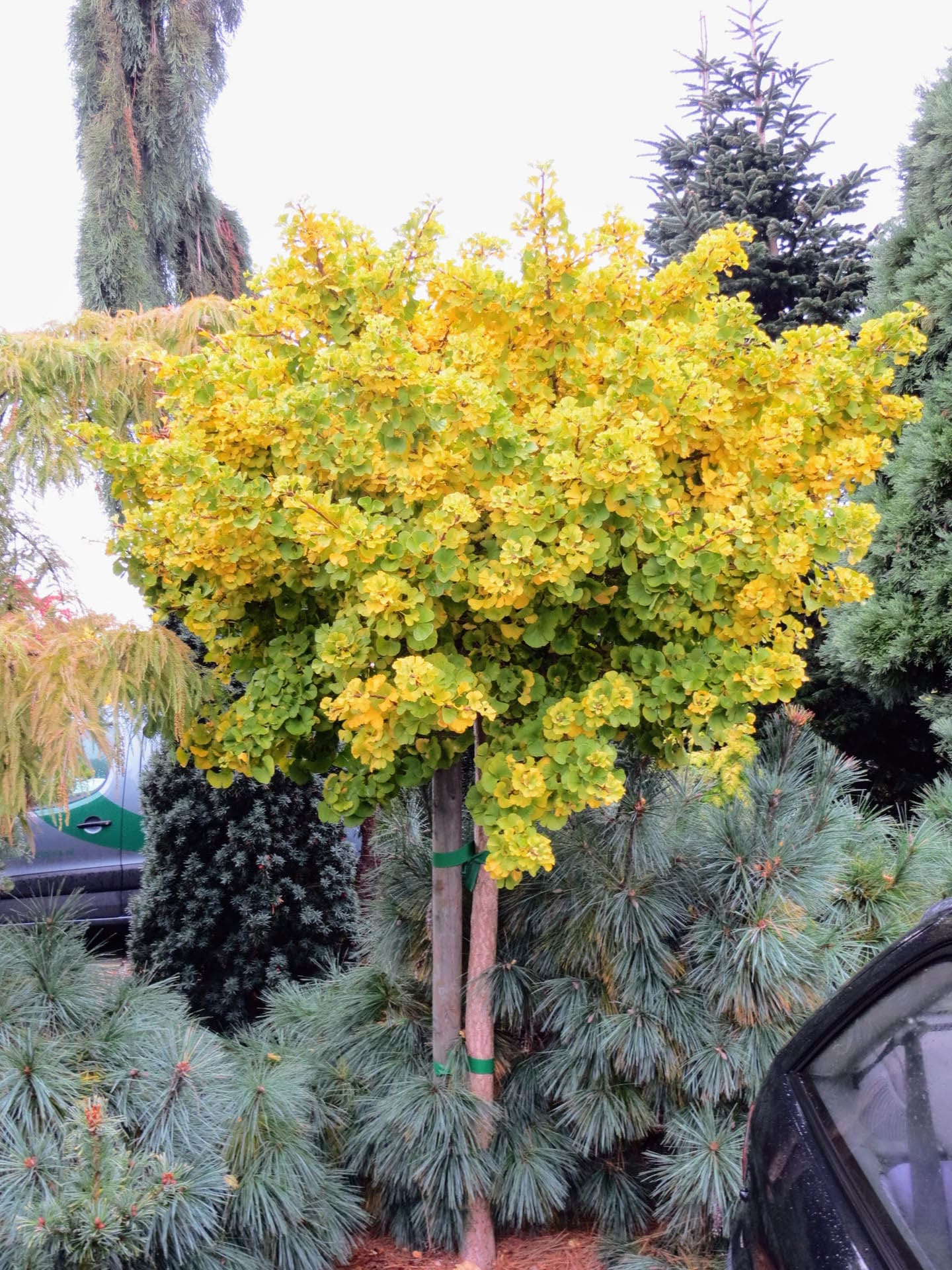
- Botanical name: Ginkgo biloba ‘Pendula’
- Mature size: 5-8 feet tall, 6-10 feet wide
- Growth habit: Slow-growing with downward-sweeping branches
- USDA zones: 4-9
This prehistoric beauty brings both resilience and elegance. Its fan-shaped leaves emerge bright green and turn brilliant golden yellow in fall.
The weeping ginkgo grows slowly and loves full sun and average, well-draining soil. It’s highly tolerant of urban pollution, heat, and poor soils. T
his tree fits beautifully in Asian-inspired gardens, beside gravel paths, or even in large containers. It requires little pruning, though training when young helps achieve the ideal weeping shape.
Not many trees combine ancient history, sculptural form, and vibrant color quite like this one. And it’s almost entirely pest-free.
How to Care for Dwarf Weeping Trees
These trees may be small in stature, but they need a thoughtful touch. Most thrive in full sun and require well-drained soil as soggy roots are the enemy.
Mulch around the base, but don’t let it pile up on the trunk. Water young trees regularly during the first year, and adjust based on rainfall once they mature.
Plus, prune in late winter or early spring to remove dead branches and maintain shape, but avoid harsh cuts unless shaping is intentional.
A light layer of compost in spring helps fuel growth. Keep an eye out for pests or fungal issues depending on your region, and be patient as many of these trees grow slowly but reward you with decades of beauty.
